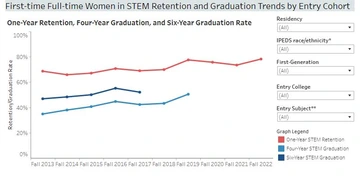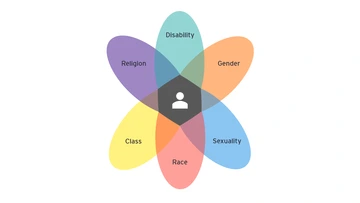Past Research & Evaluation Projects
Time to Graduation and Attrition Rates for Undergraduate Women at the University of Arizona, 2011-2021
Image

This research paper is a UAIR and WISE collaboration that explores variable retention and graduation rates of women at the University of Arizona with a focus on STEM programs. We utilized inferential methods, namely survival and churn predictive analysis, upon 10 years of undergraduate enrollment data from 2011-2021 to determine statistically significant differences in retention and graduation outcomes.
Women in STEM Retention & Graduation Data Dashboard, 2017-2022
Image

This collaboration between UAIR and WISE produced a publicly accessible data dashboard that reports retention and graduation rates by gender across the UArizona. This dashboard allows users to easily visualize how rates for female students vary compare to male students, while also allowing data to be disaggregated by race/ethnicity, entry college, field of study, first generation status, and residency status.
COVID-Related Impacts on UArizona's STEM Students, May 2020
Image

As the COVID-19 pandemic began to unfold in spring 2020, researchers with the Women in Science and Engineering (WISE) program quickly realized that students pursuing degrees in science and engineering were facing particular challenges. In response, Drs. Stephanie Murphy and Jill Williams designed a study to assess COVID-related impacts on STEM students. Drs. Murphy and Williams drew on survey findings to develop policy recommendations for University of Arizona administrators, faculty, and staff. Findings and recommendations were shared with members of the University of Arizona community
An Intersectional Analysis of STEM Student Outcomes at UArizona, 2014-2020
Image


